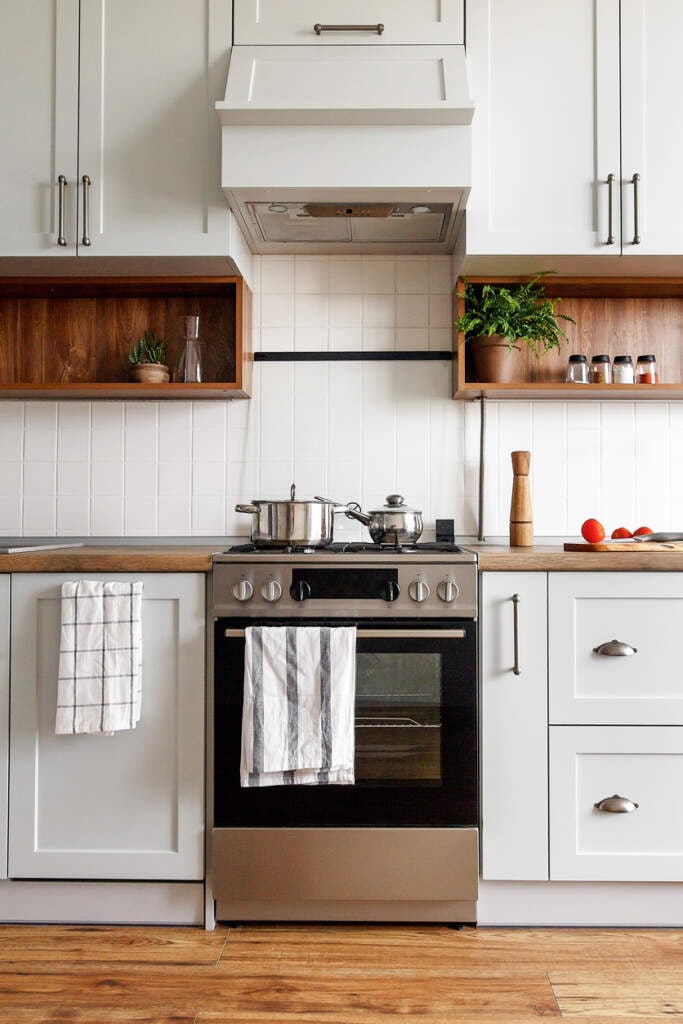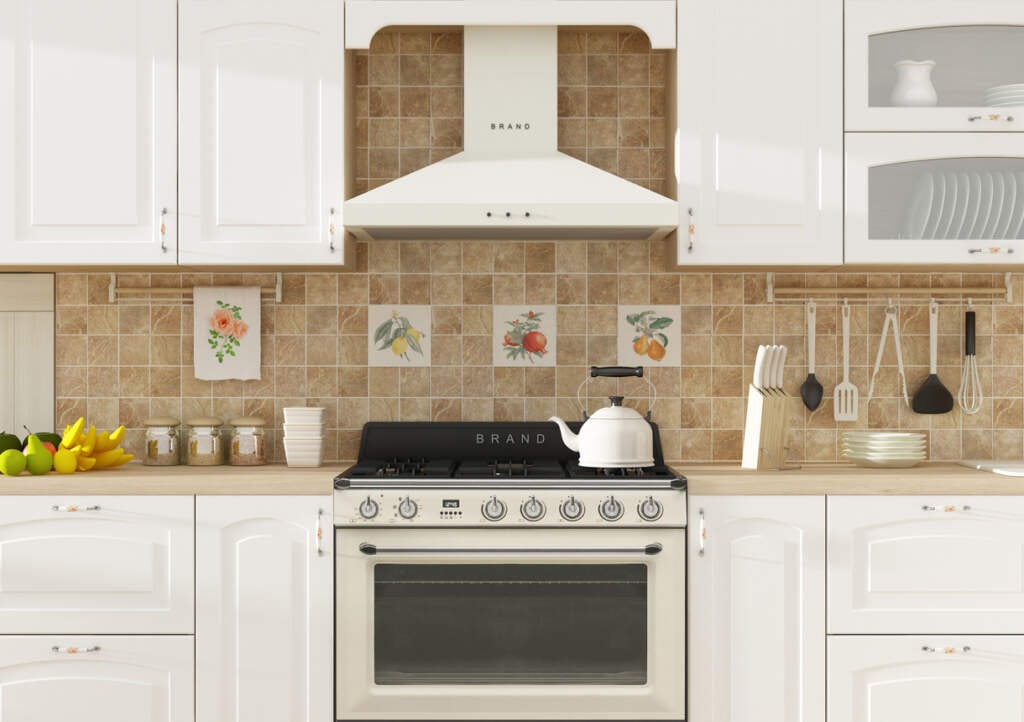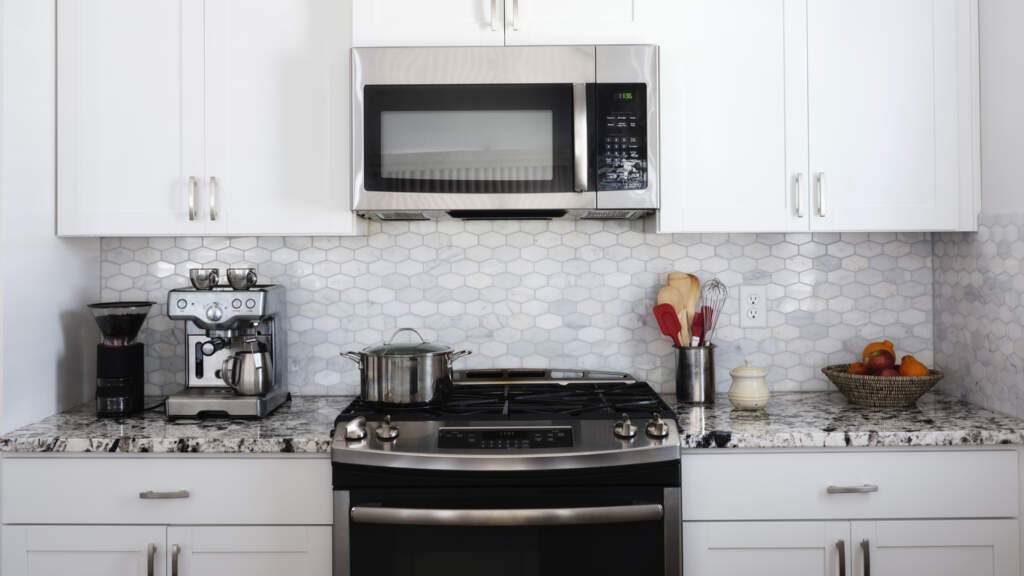What is a Rangehood?
Rangehoods are an essential component of any kitchen. Mounted above cooktops, rangehoods are designed to remove smoke, heat, moisture and other unwanted elements from the kitchen. When it comes to choosing a rangehood for your kitchen, there are a few key considerations. Rangehoods are available in different sizes and styles and come with additional features.
Do You Need a Rangehood in Your Kitchen?
Rangehoods offer plenty of benefits, from improving air quality to reducing cooking odours. Here are some reasons you may need a rangehood in your kitchen:
Improves indoor air quality
Rangehoods help to remove steam, smoke and fumes produced while cooking, preventing harmful gases and pollutants from accumulating in your home.
Reduces cooking odors
Cooking odours can often linger in your home for hours, or even days, depending on what you’re cooking! Rangehoods help to remove cooking odours so your kitchen stays smelling fresh and clean.
Prevents moisture damage
Without proper ventilation, moisture and humidity can build up in your kitchen and lead to mould growth and other issues. Rangehoods remove excess moisture and will help to prevent damage to your kitchen.
Protects your kitchen
As well as moisture, grease and smoke can end up causing stains and damage to your kitchen walls and cupboards. Rangehoods capture these particles and direct them outside your home to prevent damage.
Types of Rangehoods
Before you shop for a rangehood, it’s important to know the types available on the market, and how they differ from each other.
Canopy Rangehoods
Canopy rangehoods are set against a wall and are often used in commercial kitchens. Usually, they are made of stainless steel and are extremely effective when it comes to capturing smoke, steam and cooking odours.
Highly effective in removing smoke, steam and cooking odours, canopy rangehoods have efficient ventilation. They also are easier to install for different kitchen layouts, as they can be mounted onto the wall or ceiling above your cooktop. Canopy rangehoods also have a large coverage area to capture smoke and steam more effectively.
Advantages
- Effective ventilation
- Flexible installation options
- Large coverage area
Disadvantages
- Large and bulky
- Limited headroom
- Noise level
- Tricky to clean
- Professional installation required
Slide Out Rangehoods
Ideal for smaller kitchens, slide out rangehoods are designed to be manually pulled out over your cooktop and pushed back when it’s not needed. They’re easy to clean and wipe down, and often quite than other rangehoods.
On the other hand, slide out rangehoods don’t provide as much ventilation as other types since they’re installed under cabinets, limiting their effectiveness. They can also be more expensive than other types of rangehoods due to the installation process, the sleek design and space-saving features.
Advantages
- Space-saving design
- Easy to clean and maintain
- Quiet operation
Disadvantages
- Limited ventilation
- Fewer design options
- May require kitchen modifications
- Difficult to clean
Fixed Rangehoods
Fixed rangehoods are installed directly onto the wall or ceiling above your cooktop. They are effective in removing smoke, steam and grease from the air, but can take up a significant amount of space above the cooktop.
Advantages
- Powerful ventilation
- Design options
Disadvantages
- Large and bulky
- Can be expensive
Undermount Rangehoods
Subtle in design, under-mount rangehoods are hidden away and installed underneath your kitchen cabinets. These types of rangehoods can either be ducted or ductless.
Ducted undermount rangehoods vent air outside of your home. On the other hand, ductless undermount rangehood filters the air before circulating it back into your kitchen.
Advantages
- Sleek and subtle design
- Easy to clean
- Less grime and grease accumulate
- Quiet operation
- Space-saving design
Disadvantages
- Limited ventilation
- Requires professional installation
- Limited design options
Wall Mount Rangehoods
Wall mounted rangehoods are a popular choice. They are installed and mounted on the wall, above the cooktop or range and come in a variety of different sizes and designs, so you can choose one that complements your kitchen.
Advantages
- Space-saving design
- Efficient ventilation
Disadvantages
- Noise level
- Tricky to clean
- Requires professional installation
Island Rangehoods
Island rangehoods are designed to be mounted on the ceiling above an island cooktop, making them ideal for kitchen layouts with island stovetops.
Island rangehoods are effective in ventilation and cover a large area to effectively capture the smoke and steam from your cooktop. Coming in a variety of styles and finishes, you can choose one that suits your kitchen decor.
Advantages
- Effective ventilation
- Flexible installation options
- Large coverage area
Disadvantages
- Require significant space
- Noise level
- Requires regular cleaning
- Can be expensive
What to Consider
When choosing a rangehood for your kitchen, there are several factors to consider so you choose one that meets your specific needs and preferences.

Size and Design
Choose the size of the rangehood according to the size of your cooktop. Some rangehoods naturally take up significantly more space than others, like fixed rangehoods, canopy rangehoods and island rangehoods. If you’re looking for a subtle design that won’t take up too much space, your best bet is an undermount rangehood, a slide out rangehood or wall mount rangehood.
Installation
Consider the time, price and disruption of installation before purchasing your rangehood. Some can be installed with minimal disruption to your daily life or kitchen layout, whereas others may require some changes to your kitchen.

Maintenance and Cleaning
If you like a low-maintenance kitchen, go for a rangehood that requires little maintenance and cleaning. You want a rangehood that is easy to reach and will have less build-up of grime and grease.
Ventilation Power
Ventilation power is essential when choosing a rangehood. You need a raneghood that effectively removes smoke, steam and grease from the air while cooking to protect your kitchen and keep it fresh and clean.
Noise Level
Make sure to consider noise when choosing your rangehood. Rangehoods can be noisy, especially when the ventilation power is high. If you have an open plan home, consider a rangehood with a lower noise level.
Lighting
Generally, two globes over a cooking area provides better visibility than just one. Also make sure the globes are easy to replace. Rangehoods with halogen lights provide better visibility than those with LEDs or incandescent, however, LED lights use less power than incandescent

Controls
Rangehood controls should be easy to use, convenient and within reach. Some use touch controls, and some come with remote controls. Some models also come with advanced features like automatic sensors and timers for convenience.


